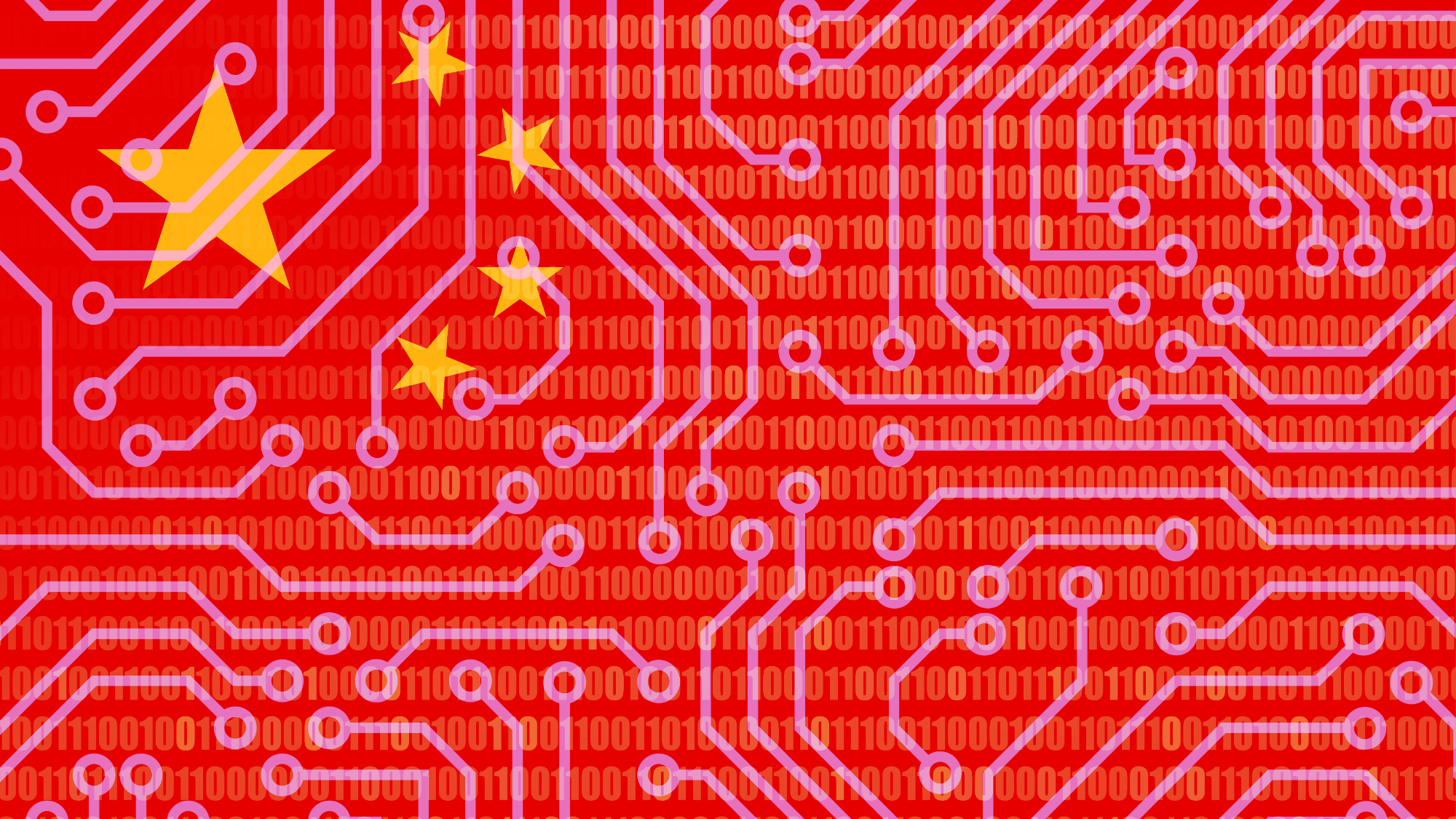China could be the world's top semiconductor foundry hub by 2030 — despite US curbs, nation to hold 30% of global installed capacity, surpassing Taiwan
China aims to become the global supplier of chips in the next few years.

Market research and tech consulting firm Yole Group predicts that China will have 30% of the world’s global foundry production capacity, making it the largest hub of semiconductor production. At the moment, Taiwan holds the highest output capacity at 23%, followed closely by China at 21%, South Korea at 19%, Japan at 13%, the U.S. at 10%, and Europe at 8%. According to Digitimes, China is expected to take the lead because of the massive investments in domestic semiconductor manufacturing, driven by Beijing’s goal of reaching self-sufficiency for its chip production.
In 2024, the East Asian country’s semiconductor production hit 8.85 million wafers per month, an increase of 15% from the previous year, and is projected to hit 10.1 million in 2025. China achieved this with the construction of 18 new fabs — for example, Huahong Semiconductor, and pure-play foundry based in Shanghai, just opened a 12-inch fab in Wuxi, with production beginning in the first quarter of this year.
The U.S. is the largest consumer of wafers, accounting for about 57% of global demand. However, it holds just around 10% of global production capacity, meaning it must source the rest of its supply from other major producers like Taiwan, South Korea, and China. On the other hand, Digitimes says that Japan’s and Europe’s production largely satisfies internal demand. There are other producers out there, too, like Singapore and Malaysia, which make up around 6% of global foundry capacity. These companies are largely foreign-owned, though, and exist to satisfy the demand in areas like the U.S. and China.
It seems that the report does not consider the fabs that are under construction in the United States, though. Several companies have started construction in the U.S., TSMC chief among them, with the company expecting to build 30% of its advanced chips in Arizona. Intel, Samsung, Micron, GlobalFoundries, and Texas Instruments also have projects underway, which will add to the U.S. wafer production capacity.
Additionally, the report did not specify how the technological capabilities of China's fabs compare to those of their Western counterparts. The U.S. has been putting export controls on the most advanced chip-making tech, making it harder for Chinese companies to acquire the necessary equipment to produce the latest chips. Because of this, Beijing is pouring billions of dollars into helping fill in the gaps in its semiconductor industry, like lithography tools and electronic design automation (EDA) software. So, even though China will likely have the upper hand when it comes to output capacity, the question of which country will have the greatest capability of producing cutting-edge chips in the near future is still up in the air.
Follow Tom's Hardware on Google News to get our up-to-date news, analysis, and reviews in your feeds. Make sure to click the Follow button.
Get Tom's Hardware's best news and in-depth reviews, straight to your inbox.

Jowi Morales is a tech enthusiast with years of experience working in the industry. He’s been writing with several tech publications since 2021, where he’s been interested in tech hardware and consumer electronics.
-
Mindstab Thrull This doesn't surprise me. China already supplied a lot, and then America saying "we don't want your cooties!" gave China extra incentive to push homegrown. 2030 makes sense if you also keep in mind that they have over 17% of the planet's population and they want their own people to BUY CHINESE!Reply
Also keep in mind, this isn't a question of "competitive" per se, but of "good enough", "obtainable", and a good-enough price. -
erazog Sure but on mature/old nodes only, they are trapped on 7nm and using that hardware to be below with it via the double pattering method is economically unsustainable which is what got Intel into so much trouble as the yields are terrible.Reply
Most estimate's are it will take them 15 years to catch up where the current western + allied semiconductor manufacturing is taking place and they aren't standing still either so will be pushing ahead with more advanced nodes. -
phead128 Reply
TSMC initially used DUV lithography to make 7nm with a yield of 76% before it later transition to EUV lithography for 7nm. SMIC is rumored to achieve decent yields at 7nm DUV comparable to TSMC yields. Intel's failure on 7nm DUV is their own unique story.erazog said:they are trapped on 7nm and using that hardware to be below with it via the double pattering method is economically unsustainable which is what got Intel into so much trouble as the yields are terrible.
Huawei has been selling tens of millions of units of phones, tablets, etc... equipped with 7nm chip, which proves that it's scaling 7nm via serial production very well, and the 'terrible yield' story has been overblown.
China's making rapid progress towards domestically developed EUV lithography prototype that could run by end of 2025, I would say 15 years is too pessimistic.erazog said:Most estimate's are it will take them 15 years to catch up where the current western + allied semiconductor manufacturing is taking place and they aren't standing still either so will be pushing ahead with more advanced nodes.
https://wccftech.com/china-in-house-euv-machines-entering-trial-production-in-q3-2025/ -
Constellar I don't see how the author can say that the China vs USA rivalry can be "up in the air" when every expert worth his salt is saying that China is at least two generations behind the USA in chip design. They were two generations behind in 2021 and they're still two generations behind. China will never solve the EUV problem, either, unless they steal ASML's patents or use the equivalent of a particle accelerator for their EUV light source, with the first solution being unacceptable and the second solution being highly impractical.Reply
Tom of Tom's Hardware, face it. Our controls on China's semiconductor ambitions really have been successful. Admit it now or admit it later, but one way or another you will admit it... -
WhteTrash It was only 2 years ago when western médias falsely claimed that China semi conductors industry would collapse because of the sanction and they would be stuck with 30nm...Reply
Pretty sure I could even find an article on it on TH. -
The Historical Fidelity Reply
Read that article again. They do not already have “EUV Lasers figured out”. Their laser’s conversion efficiency is ~50% worse than a similar laser system built in 2007 at the university of Florida, and their pulse frequency is far below what is required and is the hardest thing to increase due to limitations on the charge capacitor bank’s ability to replenish, release, and repeat in rapid succession. They even admit that the laser will be limited to mask and wafer inspections unless they can break through said barriers.phead128 said:This is incorrect and outdated information. Thanks to former ASML head scientist Lin Nan, China has achieved a major breakthrough in LPP-EUV light source using solid-state pulse lasers that are capable of achieving kilowatt-level power output and expected to be 10X more powerful in the future. China already has EUV lasers figured out, you are just outdated and confidently incorrect.
Former ASML head scientist Lin Nan drives China’s latest EUV breakthrough
Former ASML head scientist Lin Nan drives China’s latest EUV breakthrough
Non-paywall version: https://archive.ph/FwTFP
Unfortunately, the CEO of ASML Peter Wennink disagrees with your assessment. He says "Never say never" when asked about EUV in China:
The CEO of ASML thinks China will inevitably get EUV, it will just take time. You think you know more than ASML's top boss? -
acadia11 Well, while US politicians imagine an American cheap labor force unskilled to make the processors of the future but non-elitist and uneducated, China will gladly pick up the slack.Reply -
Constellar Reply
They just didn't understand how hard it is to make a hi-powered, single-mode semiconductor laser, let alone such a laser at a necessary frequency.The Historical Fidelity said:Read that article again. They do not already have “EUV Lasers figured out”. Their laser’s conversion efficiency is ~50% worse than a similar laser system built in 2007 at the university of Florida, and their pulse frequency is far below what is required and is the hardest thing to increase due to limitations on the charge capacitor bank’s ability to replenish, release, and repeat in rapid succession. They even admit that the laser will be limited to mask and wafer inspections unless they can break through said barriers.
Multi mode lasers are kinda easy, especially with long wavelengths like 807nm or the blue 465nm's.
But, an EUV single mode laser at super high poweer output? It just ain't happening, kinda like China's EUV litho ambitions. -
Constellar Reply
The guy is trying to sell his wares to China, which now he can set a $10 billion price tag on an EUV machine and it would still sell like hot cakes in China. Therefore, he'll say anything to that effect. Heck, Jensen Huang is saying the same basic thing about Huawei.phead128 said:This is incorrect and outdated information. Thanks to former ASML head scientist Lin Nan, China has achieved a major breakthrough in LPP-EUV light source using solid-state pulse lasers that are capable of achieving kilowatt-level power output and expected to be 10X more powerful in the future. China already has EUV lasers figured out, you are just outdated and confidently incorrect.
Former ASML head scientist Lin Nan drives China’s latest EUV breakthrough
Former ASML head scientist Lin Nan drives China’s latest EUV breakthrough
Non-paywall version: https://archive.ph/FwTFP
Unfortunately, the CEO of ASML Peter Wennink disagrees with your assessment. He says "Never say never" when asked about EUV in China:
The CEO of ASML thinks China will inevitably get EUV, it will just take time. You think you know more than ASML's top boss?
It's a manipulation tactic aimed at our govt, that's all... -
passivecool This is part of chinas long-published roadmap back to world leadership. It's been a few thousand years and they seem keen and dedicated to swing the pendulum back. CN made a 50-year plan and now follow it, maybe correcting, but unwavering, rigorously, relentlessly, amorally. Solid project management on a gnp social-economical level. You can disapprove of the morals and the means, but they have proven that they get stuff done. Look at the curve of the last 20 years.Reply
If i were an alien advisor from another galaxy, i would say: 'West, get your sh*t together. Decide what you want the world to look like in 50 years and stop squabbling about the petty details!"